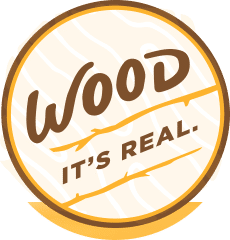By Mark Clement

I get this question, a lot – do I have to re-build my whole deck, or can I just replace the deck boards?
While scenarios vary widely as to why a deck may need a big renovation, the answer is yes, many can be salvaged.
By “resurfacing,” I don’t mean paint.
I’ve seen an alarming number of “deck saver” type paints actually accelerate rot in old decks—that’s a whole other story.
Resurfacing means removing and replacing the existing deck boards and railing. It’s a cost-effective way to extend what we building dweebs call the deck’s “service life.”
Frame
The first thing I check when a client calls me about resurfacing their deck, is if the structure is sound.
I check the posts, joists, and other critical details. Resurfacing a deck over a substandard structure is dangerous. Don’t do it. Have a professional check your deck to determine if its structure is sound and code compliant. They should inspect for rot, leakage near the house, proper sizing of framing members and proper number of posts, among other things.
Even if you’re a pretty good DIYer and are planning to install your own decking, investigating if the structure is sound is a professional job. Call a deck builder or remodeler and have them inspect the deck.
Check out what I look for in this article about How to Perform an Inspection for Deck Safety.
Rail
Not all decks require guardrails. Anything lower than 30-inches above grade typically doesn’t. Personally, I’d recommend installing one on anything that anyone could stroll off the edge of, but there’s no rule that says you have to.
Just like with the frame, I inspect that the guard rail is up to snuff. If it’s not, it’s a good idea to replace whatever is there with a new, strong 4×4. I also check the picket spacing is correct and that they’re fastened correctly.
Ledger
The ledger is a complicated and crucial inspection point. I’m looking for the proper type—1/2-inch lag screws—and number of fasteners.
I’m also looking for any sign of rot or water infiltration which is extremely damaging, but also, usually very hard for the naked eye to see.
To Re- or Not to Re-, That is the Question
Generally speaking, if the structure is sound and properly built, the deck can be resurfaced.
I often find pressure treated framing in near lumber-yard condition when I inspect a deck. Framing doesn’t get beat up by the sun like deck boards do, so it’s usually in excellent shape. Lumber stamps are still present, the wood is in the same shape as the day it was installed and there’s nary a hint of decay – prime for resurfacing.
Resurface Checklist
If you’re going to resurface—whether you have a pro like me do it or you DIY—here are a few things to keep in mind as you prep for resurfacing.
- Be careful removing decking. There are a lot of ways to do it (sledgehammers aren’t one of them – contrary to what DIY TV shows might have you believe). There are decking removal tools that are worth their weight in calluses.
- Remove fasteners if possible. Backing out screws is easier than prying them out of the wood fiber.
- Wear eye protection and remove the screws carefully.
- With the decking removed, check the ledger again for any signs of rot, leak or decay. If possible, add flashing, flashing tape or caulk. This isn’t a current accepted practice for a new deck, but we can’t go back in time either, so I recommend it.
- Tape the tops of the joists with a weather-rated flashing tape.
- Store your new pressure treated pine deck boards stacked neatly.
Now that you have everything prepped, take a minute to check out an article about the fun part: installing the deck boards.
Got any questions? Let us know at howdy@wooditsreal.wpengine.com





